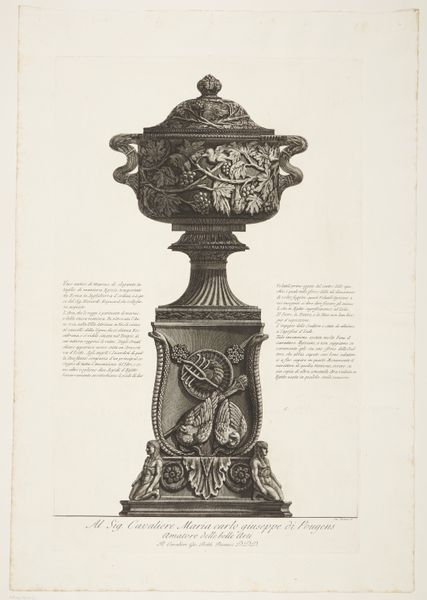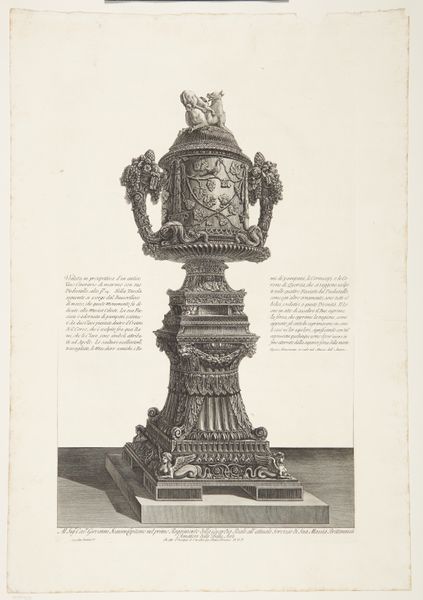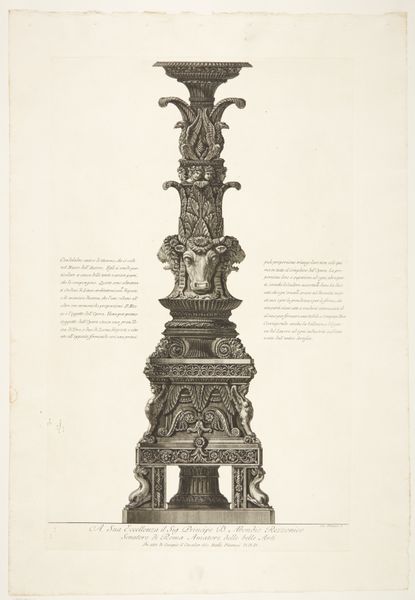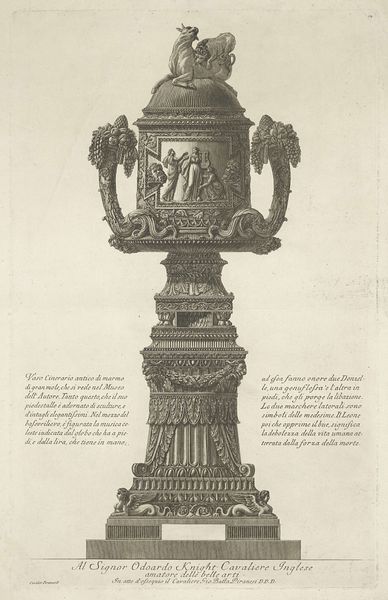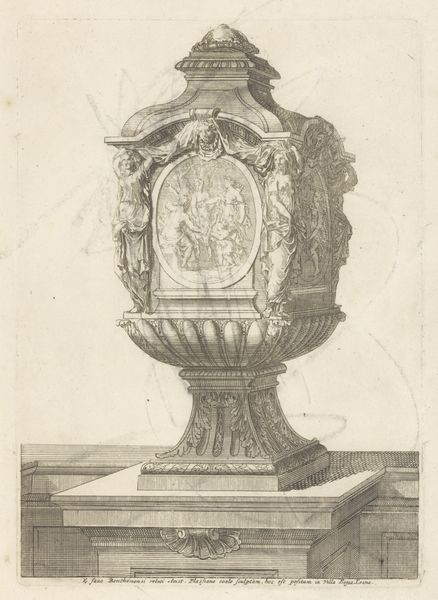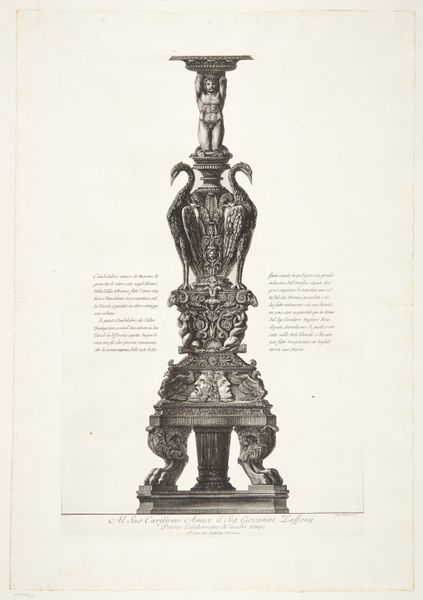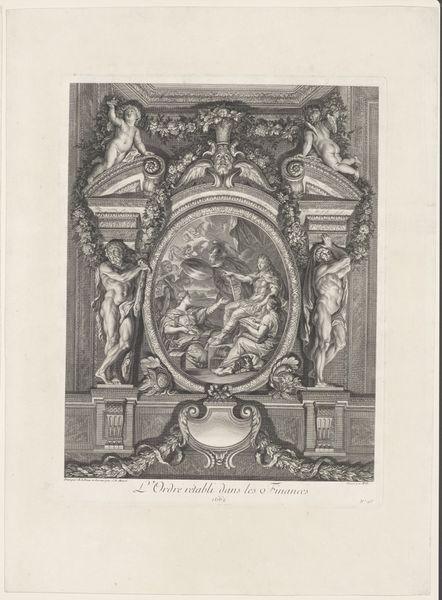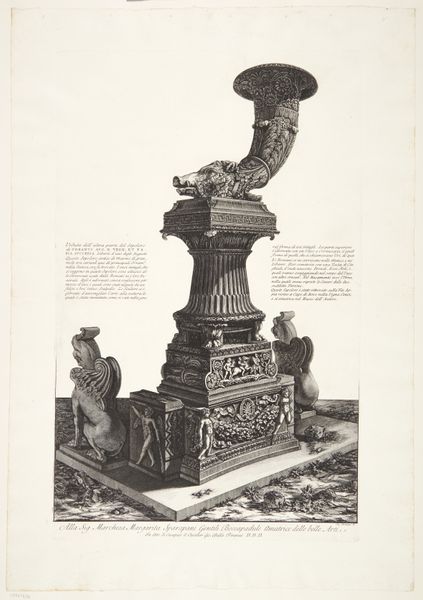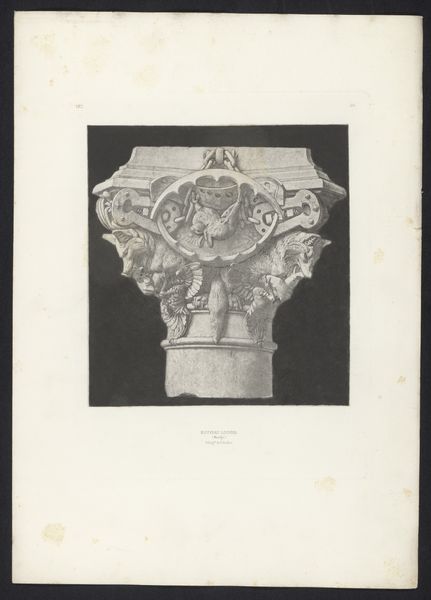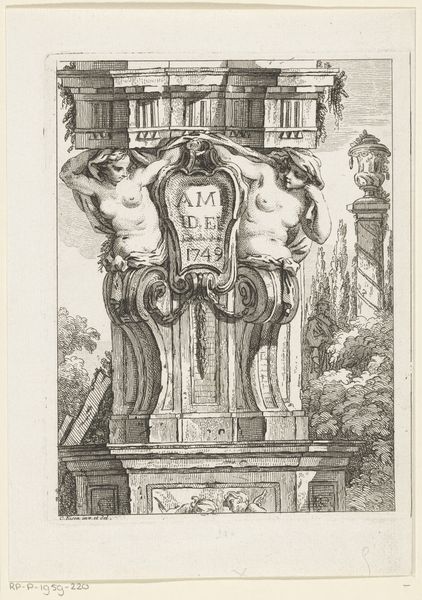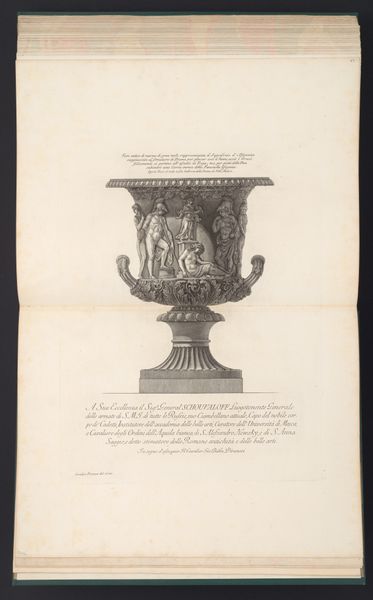
Another view of the same vase as depicted in the preceding etching, seen from below 1769 - 1778
0:00
0:00
Dimensions: 740 mm (height) x 465 mm (width) (plademaal)
Curator: Looking at this print, my first thought is that it looks like it’s looming. The sheer scale conveyed is overwhelming. Editor: Indeed. We’re looking at "Another view of the same vase as depicted in the preceding etching, seen from below", an engraving by Giovanni Battista Piranesi, created between 1769 and 1778. It's part of the collection here at the SMK. Piranesi really captured the grandeur of the baroque style. Curator: It’s certainly imposing, the low viewpoint exaggerating its size. Notice how Piranesi used extremely precise linework, emphasizing the sculptural details and giving a sense of monumentality. The play of light and shadow adds dramatic intensity. Editor: And Piranesi's focus wasn't just aesthetic. He was actively involved in debates about Roman architectural superiority. Prints like this contributed to a burgeoning public discourse around national identity and cultural heritage. These weren't just beautiful objects; they were political statements. Curator: I'd agree. The vase is clearly the primary focus here, dominating the visual space. And while historical context enriches our understanding, the artist’s careful structuring of the artwork— the proportions, the use of perspective— these elements contribute equally to its profound aesthetic impact. Editor: Precisely, but that aesthetic impact also functions as a sort of cultural propaganda, shaping public perception of Rome’s significance. By glorifying the artifacts, Piranesi promoted a specific narrative about the past. Curator: Perhaps. It’s undeniable that this viewpoint and treatment elevate a utilitarian object into something that’s sublime. The ornamentation itself is highly articulate, note the floral detailing, figures… Editor: Right. He made sure the vase’s role as a status symbol remained apparent, showcasing Rome’s opulent tastes for a wide audience that would mostly see this masterpiece rendered through prints like these, a means for distributing propaganda in the Age of Enlightenment. Curator: Whether intended for propaganda or not, his technical virtuosity remains stunning. Ultimately, Piranesi compels us to reflect on art’s capacity to communicate, provoke, and simply inspire. Editor: Agreed. His work, particularly pieces such as this, shows how art history is never solely about "beauty." Art is fundamentally tied to society, culture, and, as you suggested, to how the cultural narrative inspires our way of seeing and being in the world.
Comments
No comments
Be the first to comment and join the conversation on the ultimate creative platform.
